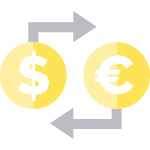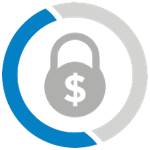 1-800-805-5783
1-800-805-5783 About Us
![[x]cube LABS](https://d6fiz9tmzg8gn.cloudfront.net/wp-content/uploads/2021/08/blockchain-guide-xcube-logo.png)
Established in 2008, [x]cube LABS is a unique company at the intersection of strategy, creativity and technology, helping enterprises develop innovative digital products to transform customer engagement and business operations.
Located in the US, Europe and Asia, [x]cube LABS has worked with more than 30 Fortune 2000 companies and has developed a reputation as a high-quality partner for building digital centers of excellence, customer experience transformation and IoT implementations.

A blockchain is a digital, distributed transaction ledger with identical copies maintained on multiple computer systems controlled by different entities.
Anyone participating in a blockchain can review the entries in it. But the blockchain can only be updated by consensus of a majority of participants. Once entered into a blockchain, information can never be erased!

Our previous report introduced us to blockchain technology, mentioned 2017-18 as a period of experimentation and emphasized the challenges and benefits of implementing blockchain along with its potential business applications.
We forecasted 2019 to be a huge boost for Blockchain technology and Blockchain-based service providers as full-scale deployments took shape across the business spectrum.

2019 and 2020 witnessed the evolution of Blockchain from an underdeveloped technology to a technology that is well refined and poised to deliver on its initial promise of disruption.
During the past one year, blockchain image has shifted from being a niche and hyped technology to one that solves practical business problems.

Innovative technologies have for long been explored by businesses, governments, and other organizations, leading to newer business models and ultimately creating value.
Like any new technology that has the potential to disrupt, enthusiasm towards blockchain technology continues to be universally similar as organizations and businesses alike continue to explore its potential business applications.
Financial services and, more specifically, the fintech sector leads in blockchain development, while other industries are cautious in their search for use cases to provide a return on investment to justify the cost and effort of implementing blockchain solutions.
Today, fintech remains a blockchain leader, but businesses in other sectors such as technology, media, telecommunications, life sciences and health care, and government - are expanding and diversifying their blockchain initiatives.
Summary
Table of Contents
1. Industry Adoption
2. Introduction to Blockchain
3. Regulations
4. Market Prospects
5. ABOUT [x]cube LABS
Financial Services

Cross Border Payments
Startups in this Space




Trade Finance

Startups in this Space



Insurance
Startups in this Space



Clearing and Settlement

Startups in this Space



Interoperability Gaps: Lack of interoperability costs 150,000 lives and $18.6BN per year in the U.S.

Need for Longitudinal Health Records: 46% of U.S. clinicians do not have a complete view of their patients’ health history/ records.
Further, individuals cannot view a unified medical record or pass it on to clinicians

High Error Rates with Centralized Health IT Systems: Error rates for successfully identification or integration of a file are 25% for hospitals and health systems; and as high as 50% – 60% outside hospitals
EHR Interoperability

Startups in this Space


Get the full report which has:
Key use cases across industries
And more...
Download for FREE